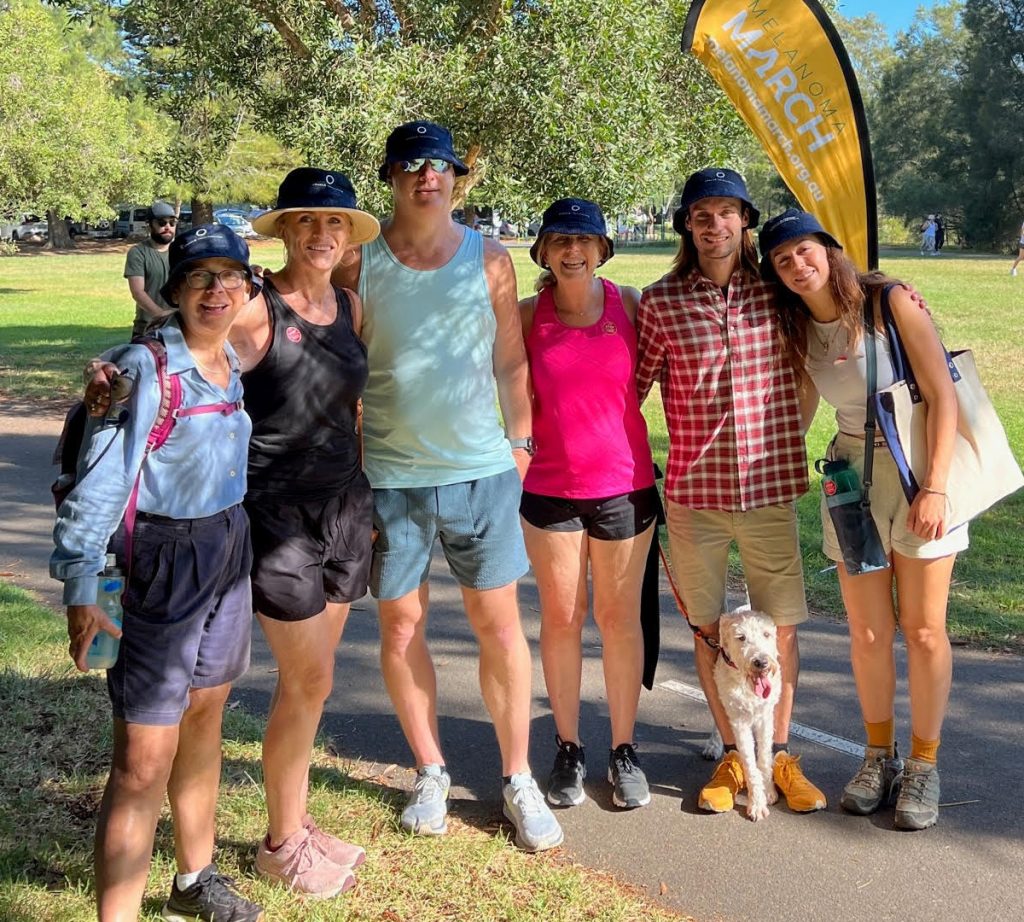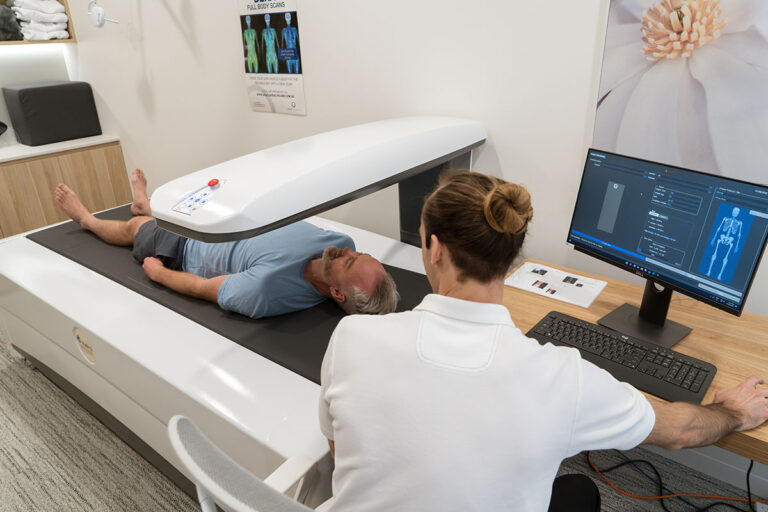A fantastic awareness and fundraising initiative by Melanoma Institute Australia.
This past Sunday, the 19th of March, our team had the privilege to attend the Manly Beach Melanoma March. This was one of several such events being hosted this month by the Melanoma Institute of Australia (MIA). Our team, six humans and one dog, enjoyed a walk alongside scientists, doctors and executives from MIA, as well as some 500 other supporters of MIA’s initiative. MIA’s goal through these events is to raise funds for research into melanoma detection and treatment, as well as awareness about sun safety and techniques for reducing UV damage.
Australian culture is rich with outdoor sport and activities. This bright and treasured aspect our nation’s lifestyle, however, is accompanied by our unsettling title as the nation with the highest incidence of melanoma and non-melanoma skin cancer in the World, as depicted in figures 1 & 2. Our public health system has failed to address this. We have no available national skin screening program, and unfortunately, our easy-going attitude has most Aussies saying “she’ll be right” when presented with their risk of skin cancer. March is positioned at the end of Australian Summer. As such, MIA’s positioning of Melanoma March urges us to reflect on the UV exposure our skin has faced throughout the summer passed, and then subsequently throughout our lifetimes. It is the perfect time to take preventative measures, and get your skin screened. #getyourskinchecked

At the march in Manly, we had the pleasure of meeting Associate Professor Alexander Van Akkooi MD, a surgical oncologist who was recently appointed to head up surgical oncology within MIA’s esteemed ranks. With 15 years’ experience studying and treating melanoma in the Netherlands, his contributions to the field are highly valued. It is surprising to see the inclusion of European scientists in Australian melanoma research. The common misconception is that in the gentle northern European sun, incidence of melanoma would be significantly lower than in Australia and thus skin cancer would not be of national concern. However, when examining the prevalence of melanoma in Scandinavia, The Netherlands and Northern Europe, the incidence per 100,000 is vastly similar (Figure 1). This can be accredited to many things, notably low levels of education on the dangers of sun exposure. This, accompanied by the regions’ easy access to travel to areas with harsher UV (Australia and the Mediterranean) leads their populations to have low regard for sun safety while travelling as they “try hard not to look pale”.

Fortunately, with adapting technology and increased education and awareness about melanoma, our future is starting to look bright. The ACEMID (Australian Centre of Excellence in Melanoma Imaging and Diagnosis) Trial, currently being conducted on Australia’s East Coast, is investigating innovative 3D photomapping systems (VECTRA WB360) as a technology to increase the efficiency and effectiveness of early detection of melanoma (Australian Centre of Excellence in Melanoma Imaging and Diagnosis, 2022). Emphasis on early detection is of prime importance, as evidenced in the 2021 survival statistics from the Australian Cancer Research Foundation which show that detection during Stage One melanoma has a five-year survival rate of 99%, whilst detection at Stage Four has a five-year survival rate of 20%. Further, rates of survival in countries like Australia, Italy and Denmark wherein screening and treatment programs are being funded at a higher rate than other countries are showing increased detection, treatment and survival overall (Skin Cancer Index, 2018).
The importance of preventative health screening in facilitating early detection of melanoma is clear. We, at Oracle Healthcare support the move towards a national skin cancer screening program. We are grateful to have spent a delightful and informative morning marching the Manly promenade with some of the brightest minds in the field (protected by hats, sunscreen and sunglasses of course).

References
Australian Cancer Research Foundation (2021) ACRF Australian Centre of Excellence in Melanoma Imaging & Diagnosis, ACRF. Australian Cancer Research Foundation. Available at: https://www.acrf.com.au/acemid/ (Accessed: March 21, 2023).
Cancer Australia. (2019, December 18). Melanoma of the skin statistics. Melanoma of the Skin Statistics . Retrieved March 23, 2023, from https://www.canceraustralia.gov.au/cancer-types/melanoma/statistics
Cancer Council Australia . (2022, August 12). Tanning. Skin Cancer Statistics and Issues. Retrieved March 24, 2023, from https://wiki.cancer.org.au/skincancerstats/Tanning
de Vries, E., van de Poll-Franse, L. V., Louwman, W. J., de Gruijl, F. R., & Coebergh, J. W. (2005). Predictions of skin cancer incidence in the Netherlands up to 2015. The British journal of dermatology, 152(3), 481–488. https://doi.org/10.1111/j.1365-2133.2005.06386.x
Ribas, J. R., Rodríguez, S. G., Fariña, E. A., & Suárez-García, A. (2022). An Assessment on the Efficiency of Clothing with UV Protection among the Spanish Navy School Students. Materials (Basel, Switzerland), 15(18), 6227. https://doi.org/10.3390/ma15186227
Skin Cancer Index 2018. derma.plus. (2021, May 11). Retrieved March 23, 2023, from https://derma.plus/en/skin-cancer-index-2018/
Stang, A., Ziegler, S., Büchner, U., Ziegler, B., Jöckel, K. H., & Ziegler, V. (2007). Malignant melanoma and nonmelanoma skin cancers in Northrhine-Westphalia, Germany: a patient- vs. diagnosis-based incidence approach. International Journal of Dermatology, 46(6), 564–570. https://doi.org/10.1111/j.1365-4632.2006.03056.x
University of Queensland (2022) Clinical trials, Australian Centre of Excellence in Melanoma Imaging & Diagnosis. University of Queensland. Available at: https://acemid.centre.uq.edu.au/research/clinical-trials (Accessed: March 21, 2023).
Wang, X., Guo, J., Gu, D., Yang, Y., Yang, X., & Zhu, K. (2019). Tracking knowledge evolution, hotspots and future directions of emerging technologies in cancers research: a bibliometrics review. Journal of Cancer, 10(12), 2643–2653. https://doi.org/10.7150/jca.32739
World Cancer research Fund International (2022) Skin cancer statistics: World cancer research fund international, WCRF International. Available at: https://www.wcrf.org/cancer-trends/skin-
World Cancer Research Fund International. (2022, December 5). Skin cancer statistics. WCRF International. Retrieved March 23, 2023, from https://www.wcrf.org/cancer-trends/skin-cancer-statistics/
World Health Organisation , Globocan, International Agency for Research on Cancer, & Global Cancer Observatory. (2021, March). The Netherlands Fact Sheet. World Health Organisation. from 528-the-netherlands-fact-sheets.pdf (iarc.fr) (Accessed March 21, 2023)



